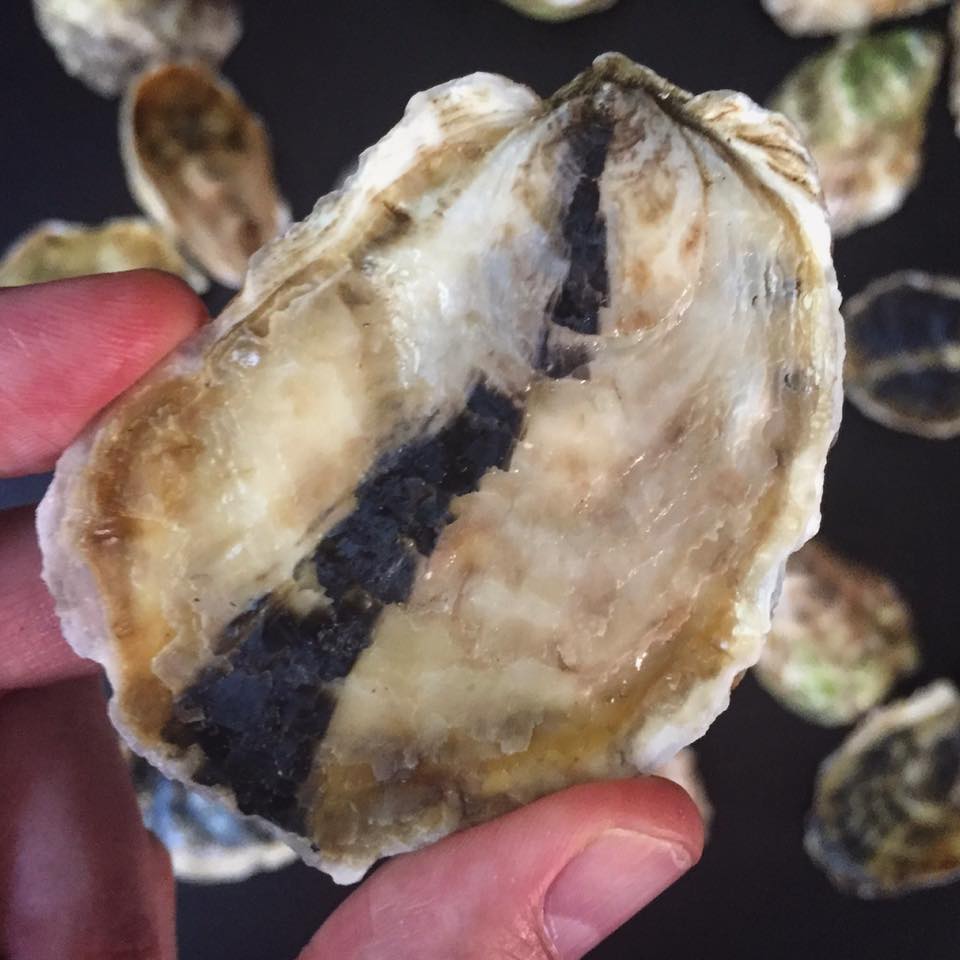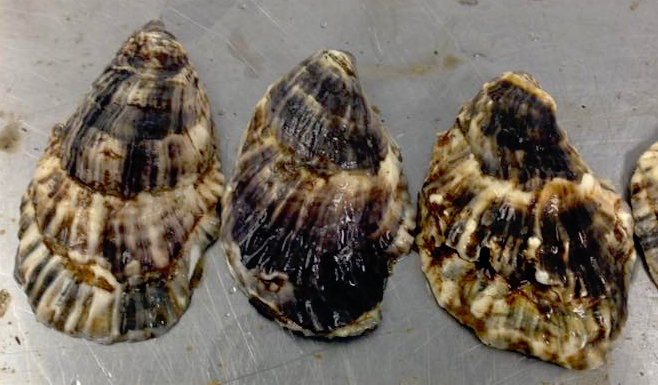By Dana Deskiewicz

How do oysters earn their stripes? Striped oyster shells get their colors from hard work under the sun.
Surprisingly an oyster can sunburn, just like us! They contain melanin in their shells, the same pigment that we have in the outer layer of skin that is affected by UV light. The longer the shell is exposed to sunlight, the darker it becomes, like the fantastic Watch Hill oyster above. Oysters shaded by other oysters, lying deep in water, or tucked into bags won’t have to worry as they retain their lighter shells.
And you shouldn’t worry about oyster UV exposure. A darkened shell is just cosmetic. Think of the stripes as oyster tan lines. It’s common to see some great striping among different oysters. Nature’s artwork at its finest.
Although eating lots of oysters does provide a healthy dose of nutrients that do a body good, it won’t help you tan better. But we have yet to run experiments. This gives us a good excuse ?. Slurp ’em up!
- Curious about Watch Hill oysters? Learn all about them and 200+ other oyster varieties, plus scores of oyster facts with the Oystour app. Oystour is available for $1 in the App Store and on Google Play. You can also follow Oystour on Instagram, Twitter and Facebook.
- Check out the Oyster Obsession Q&A with Oystour creator, Dana Deskiewicz.
- Get more information about oyster nutrients at Seafood Health Facts.

Save
Save
Actually the stripe down the middle of the shell denotes that that is a hatchery produced, farm raised, triploid oyster. It has nothing to do with sunlight.
I’ve always wondered about the single stripe on so many farmed oysters. Thanks, Jay! Jay Styron is director of Marine Operations at UNC Wilmington.